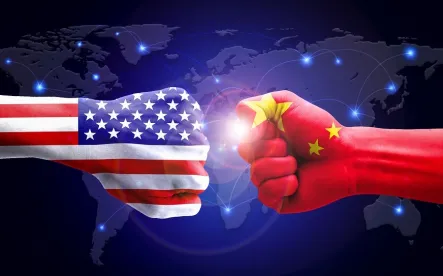In what has become his trademark Trumpian manner, the President announced last Friday that new tariffs and trade restrictions against China are on again, at the same moment that his senior Commerce and Treasury Department negotiators were trying to work out a deal in Beijing. This came just a handful of days after Department of Treasury Secretary Steven Mnuchin announced that the trade war with China was “on hold.” The President has declared again in a tweet Saturday that America “can’t lose” a trade war with China. We’ve debunked that fallacy here. But even if one accepts the premise that we should prosecute a trade war, it’s well established that a micromanaging general quickly loses the confidence of his ground troops. Wars have been lost for less. On trade, the President’s conflicting directives have everyone a little confused. Here are the highlights for the time being:
The White House announced the restrictions on Friday, May 29 in a statement from President Trump on confronting China’s unfair trade policies, as follows:
1) Increased tariffs
First, President Trump announced that the U.S. government will impose a 25 percent tariff on $50 billion of goods from China containing industrially significant technology. Industrially significant technology includes items in 10 strategic sectors identified in China’s “Made in China 2025” program. The full list of imports covered by the 25 percent tariff will be released by June 15, 2018.
2) Investment restrictions
Second, the United States will tighten restrictions on investments from China. In particular, acquisition of certain strategically significant technologies by Chinese investors will be restricted. President Trump’s statement did not specify what technologies are considered to be strategically significant. The list of investment restrictions will be announced by June 30, 2018. We expect that the focus will be to deny access to technologies that would be important to the “Made in China 2025” sectors. For more detail on how the U.S. government can impose investment restrictions, see our article here.
3) Increased export controls
Third, the United States will implement enhanced export controls to restrict the export of certain industrially significant technology to Chinese persons and entities. Exports to China are controlled under the Export Administration Regulations (EAR) administered by the Department of Commerce and the International Traffic in Arms Regulations (ITAR) administered by the State Department. Under those regulations, the United States maintains an arms embargo against China. We expect the increased controls to affect both administrative regimes. The list of controls will be announced by June 30, 2018.
Anticipated impact of new trade restrictions on China
During the weekend following President Trump’s Friday statement, the negotiations in Beijing between Secretary of Commerce Wilbur Ross and Chinese Vice Premier Liu He ended in a stalemate.
So what will happen next? If the new announcement is bargaining chip in U.S.-China trade negotiations, it’s a long play. We confidently predict there will be no U.S.-China trade deal this year. Here’s what we’re expecting in the shorter term:
So what will happen next? If the new announcement is bargaining chip in U.S.-China trade negotiations, it’s a long play. We confidently predict there will be no U.S.-China trade deal this year. Here’s what we’re expecting in the shorter term:
-
On June 15, a full list of Harmonized Tariff numbers corresponding to $50 billion in Chinese imports will be published. The effective date of those tariffs is yet to be determined, but the administration’s past tariff actions suggest that the effective date will be on or around June 30. Current importers of Chinese goods can prepare by identifying the relevant company databases now should review the June 15 list carefully to determine the effect on their supply chains. If the new tariffs are imposed, companies affected by the listed imports may have the opportunity to seek exemptions.
-
On June 30, the Administration will release a list of specific foreign direct investment restrictions, again likely with a very near term effective date. These restrictions will likely take the form of changes to the procedures of the Committee on Foreign Investment in the United States (CFIUS). They will be separate from the CFIUS amendments now being considered by Congress but may be very similar to some of those proposals. Either way, changes to CFIUS are coming, particularly for Chinese investors. We’re suggesting that any American or Chinese party to a foreign investment deal take steps to determine whether the transaction would be subject to enhanced scrutiny, before getting too deep into negotiations.
-
Also on June 30, the U.S. Department of Commerce will likely revise the U.S. Export Administration Regulations to increase controls over the export of certain industrial technologies to China. Any U.S. companies exporting to China should be able to review their current exports in advance, in order to be in a position to assess and respond to the new controls when they are implemented.




 />i
/>i
